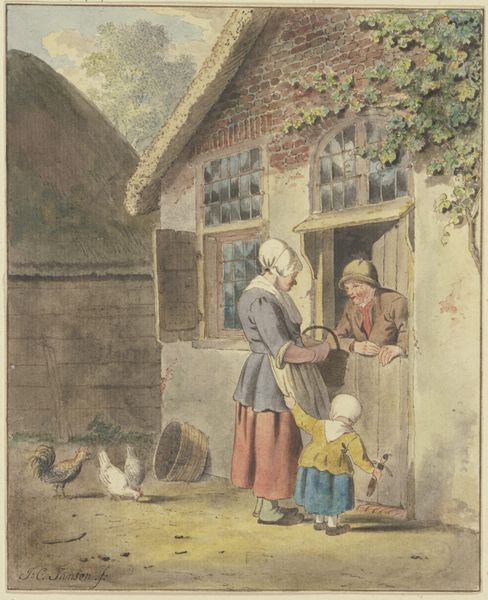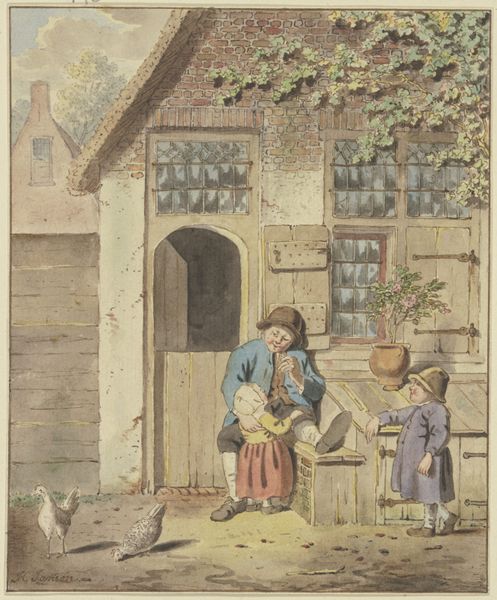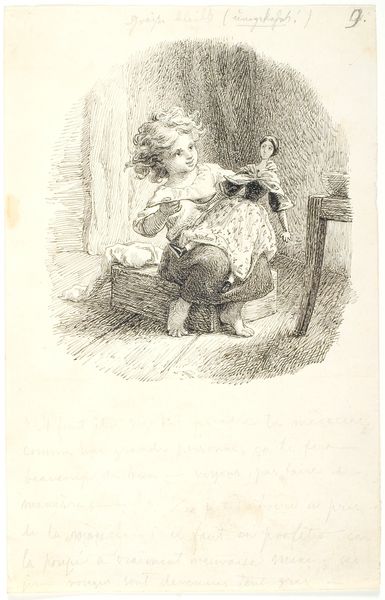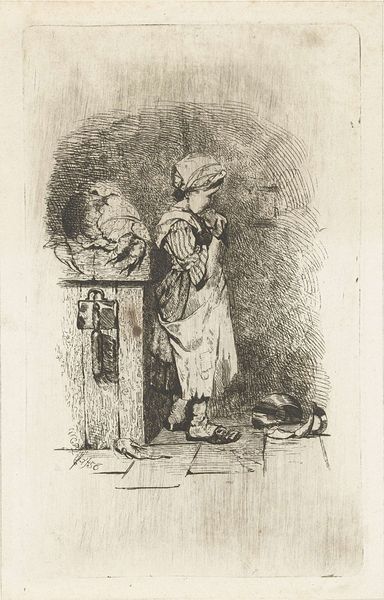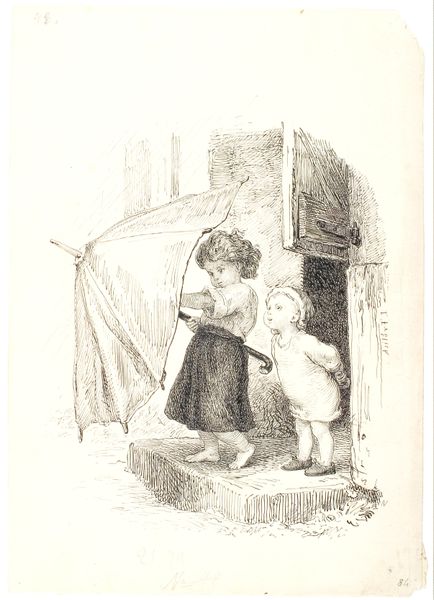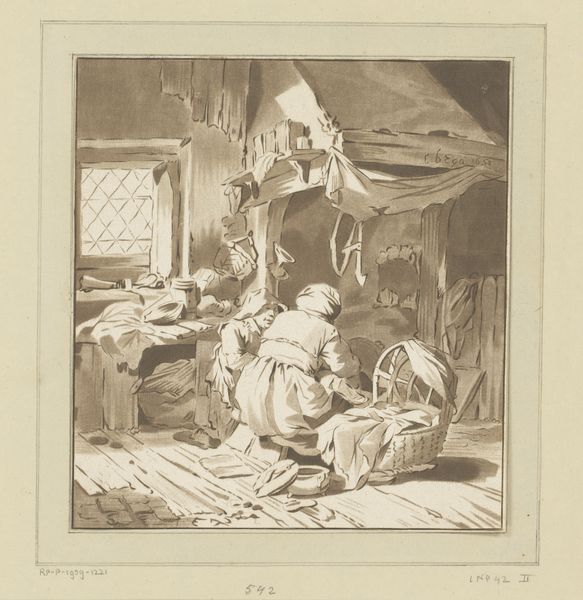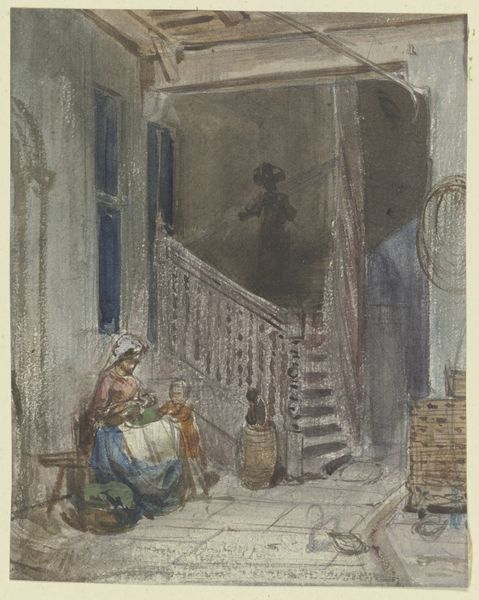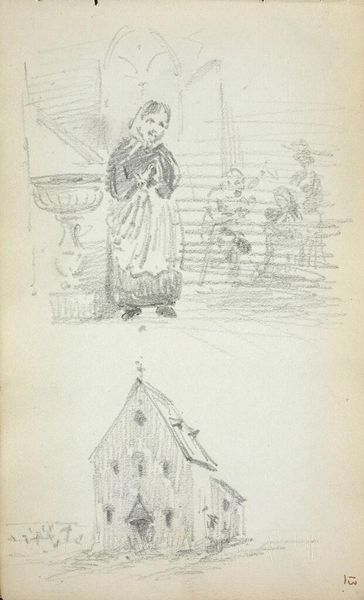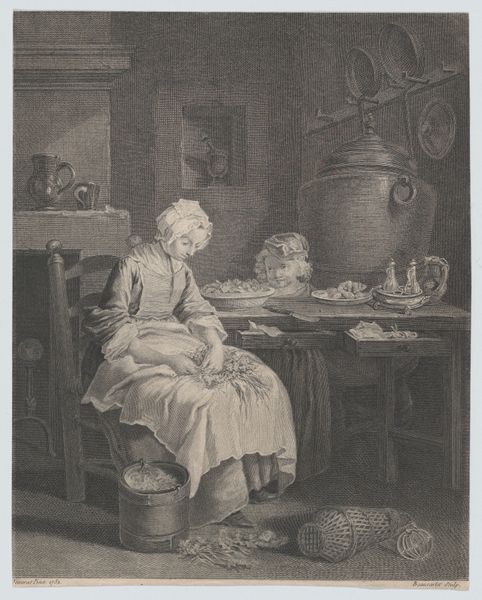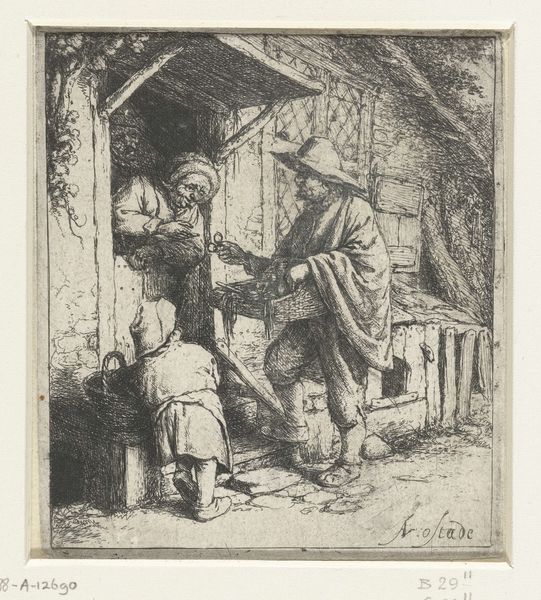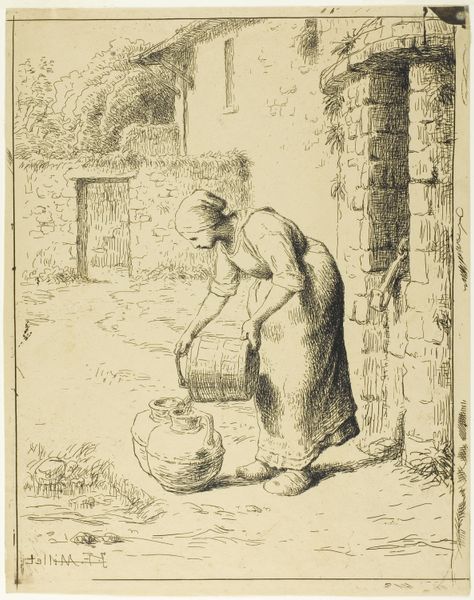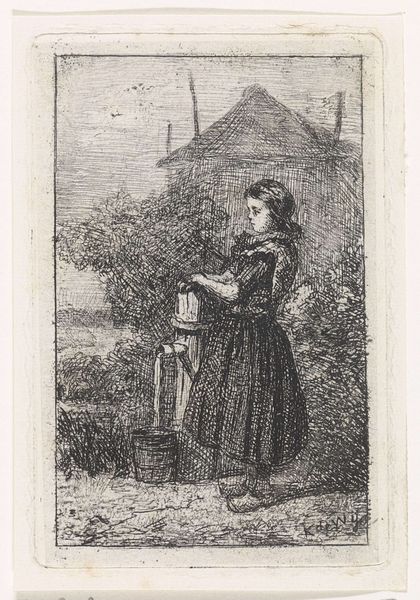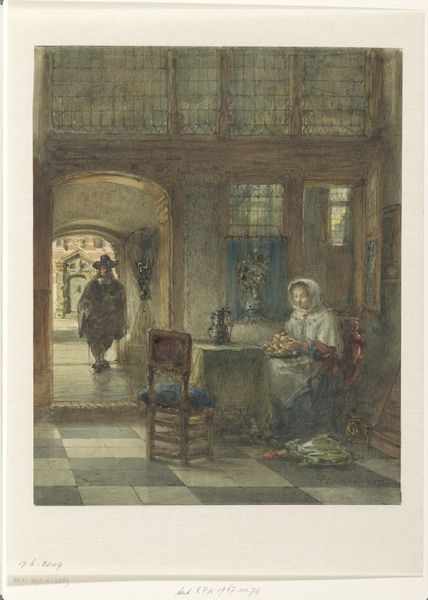
drawing, paper, pencil
#
portrait
#
drawing
#
pencil sketch
#
landscape
#
paper
#
pencil
#
genre-painting
#
academic-art
#
realism
Dimensions: height 260 mm, width 216 mm
Copyright: Rijks Museum: Open Domain
Curator: I find this image deeply nostalgic. There is something about this depiction of a girl feeding her dog. Diederik Franciscus Jamin completed this pencil drawing on paper in 1861, it's titled "Meisje met een hond". The composition, almost monochromatic save for some subtle hints of color, evokes a dreamlike, distant past. Editor: It’s interesting you say nostalgic because my first impression is somewhat melancholy. The muted palette definitely contributes, but it's more the girl's solemn expression, the quiet scene overall. This isn't a boisterous display of affection, it is a moment charged with the quiet rituals of care and power between humans and animals. Curator: Consider the visual grammar here, the symbolism is strong. The dog, historically representing loyalty and companionship, gazes adoringly at the girl. In return, she extends a dish, seemingly bestowing sustenance, which also means trust, but at the same time, obedience. The tower in the background is barely present, just as the divine might have seemed. Editor: Absolutely, there’s a clear hierarchy. But I wonder about access – this scene feels very specific, quite likely staged in a courtyard or private garden, offering insight into the domestic lives of a privileged class. And look at the building in the background with the tower – its social reality is absent, only visible from afar. We should interrogate what this image silences or leaves in the background. Curator: Yet there's also a universal resonance, isn't there? The innocence of childhood, the bond between humans and animals is a pretty recognizable topic of representation, across time periods and media formats. Note the precision of the pencil work, the subtle rendering of light and shadow on the girl's dress and the dog’s fur. Editor: Precisely. But these common symbols become ideological tools, no? We must not forget that representing childhood innocence often serves a purpose; it tends to obfuscate realities of class or race by idealizing and normalizing white Western family structures. This work does offer us an aesthetic pleasure, but its underlying historical assumptions are equally interesting. Curator: I see your point about these complex assumptions and its critical importance in the present. This visit, in that sense, feels newly layered with meanings. Editor: Indeed, what began as an immediate impression transformed into something with so many social contexts to discuss, revealing art’s unique ability to ignite conversation and change perspective.
Comments
No comments
Be the first to comment and join the conversation on the ultimate creative platform.
